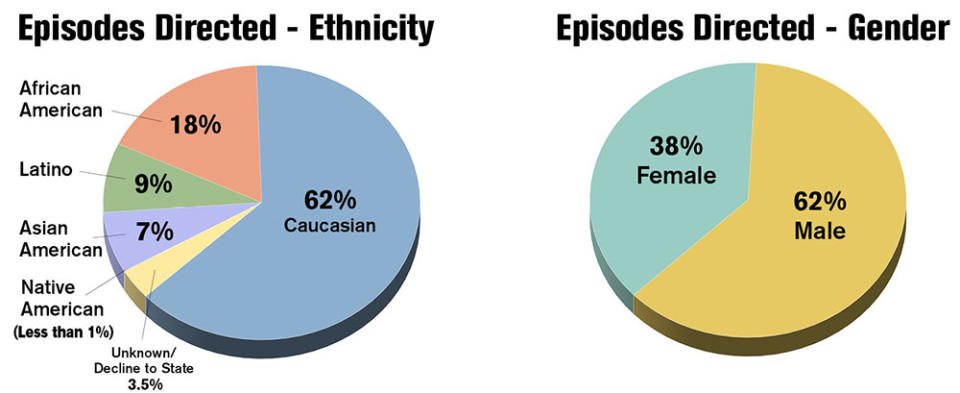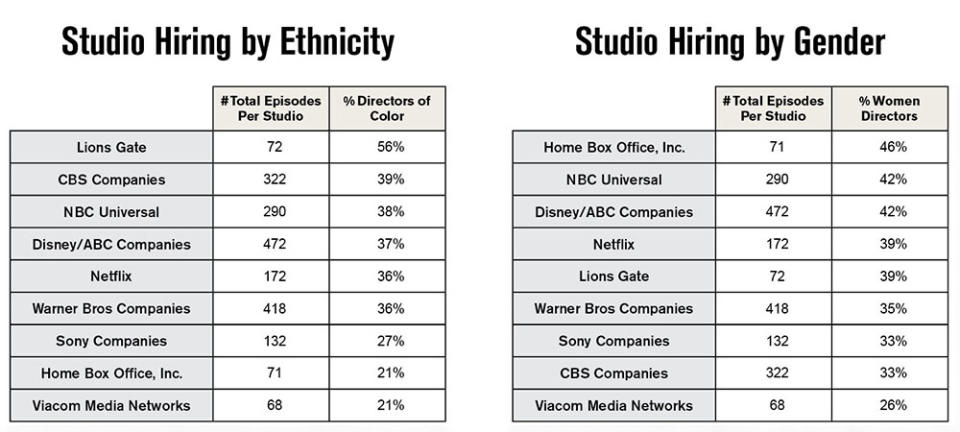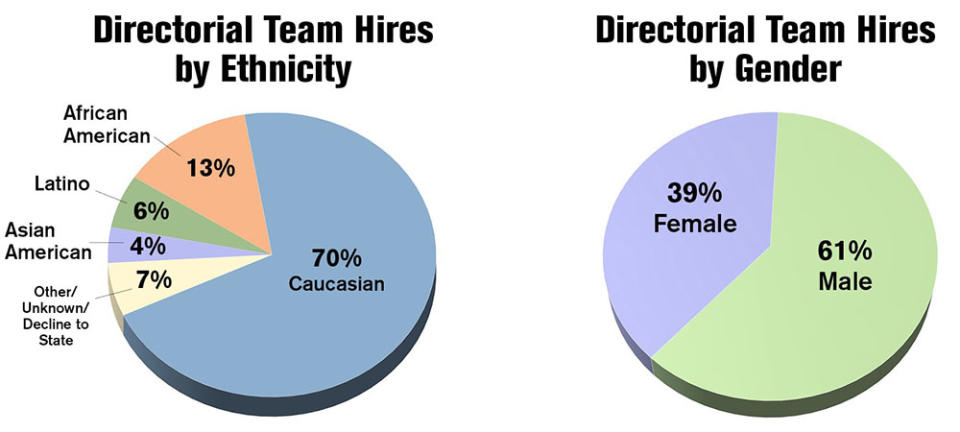Study Finds TV Directing Jobs for Women, People of Color Rose Amid Pandemic

While the onset of the pandemic drastically curbed television production, directors from historically excluded backgrounds still managed to make some progress in securing gigs.
According to the latest inclusion report from the DGA, 2,691 guild-covered episodes of scripted series were released in the 2020-21 season, down 36 percent from 4,186 the season prior. However, 38 percent of episodes from the pandemic’s first season were helmed by women (up from 35 percent), and 34 percent by directors of color (up from 29 percent). In 2014, the shares of episodes directed by women and by people from the global majority were both 16 percent.
More from The Hollywood Reporter
NBCUniversal Appoints DEI Heads for Parks and Advertising Divisions (Exclusive)
NPR, LAist Studios Launch Audio Incubator for Latino Creators (Exclusive)
Snap Unveils Equity Pledge to Increase Representation On Its Original Programming
“When the pandemic hit, a big question on our minds was whether progress on inclusive hiring would backslide as the production environment changed radically with the implementation of necessary COVID safety protocols,” DGA president Lesli Linka Glatter said in a statement. “Despite all the production challenges, the good news is that inclusive hiring continued its upward climb last year – both in overall hiring, as well as hiring of first-time directors. That said – although there has been continued progress, the goal of a level playing field for all has not yet been achieved.”

Courtesy of DGA
Glatter noted that Latino and Asian DGA members continued to be underrepresented when it came to episodic credits. Both groups had a 7 percent share in 2019-20, and while Latinos saw a slight increase to 9 percent the following season, the proportion of Asians stayed flat, as did that of Native American helmers, who directed fewer than 1 percent of episodes. With the exception of Tyler Perry, who helms up to 150 episodes a year, Black directors rose from 15 percent to 18 percent.
Put another way, of the 896 directors hired for the 2020-21 season, 61 percent were men and 39 percent were women. White directors comprised 64 percent, Black helmers 15 percent, Latinos 9 percent, Asians 8 percent and Native Americans 0.2 percent. (The remaining 4 percent declined to state their race.)
On an intersectional note, 39 percent of the season’s 2,691 episodes were directed by white men, 23 percent by white women, 11 percent by Black men, 7 percent by Black women, 5 percent by Latino men, 5 percent by Asian men, 4 percent by Latinas, 2 percent by Asian women, 0.3 percent by Native American men and one episode by a Native American woman. (The remainder were helmed by directors who declined to state their race.)
The DGA inclusion report also continues to analyze first-time TV directors. There were 113 first-time episodic directors in the 2020-21 season, 46 percent of whom were women (down from 48 percent) and 39 percent people of color (up from 29 percent).
Nearly two-thirds of these opportunities (72 episodes, or 64 percent) went to people already affiliated with the show, such as writers and actors, with the remainder (41 episodes, or 36 percent) to career-track directors. First-time career-track directors tend to be more diverse than first-time affiliated hires – the majority of the former category (55 percent) were women, compared with 40 percent of the latter, and 44 percent were directors of color, as opposed to 38 percent of first-time directors who were already affiliated with the show.
The DGA, which has been tracking this data since 2009, notes that taking stock of who’s getting these big breaks is a more accurate way to measure the TV directorial pipeline, because two-thirds of career-track directors will go on to helm other series, whereas just a quarter of show-affiliated directors will do the same for shows they’re not already involved with.
The DGA also reported on the diversity of directorial hires by production (not distribution) studio. Leaving out Amazon, Apple and MGM, which each had fewer than 50 guild-covered episodes last season, the only major studio to hire a majority of directors of color was Lions Gate (56 percent), while HBO hired a greater share of women (46 percent) than the other studios did.

Courtesy of DGA
Finally, this year’s DGA inclusion report includes for the first time a census of directorial teams – unit production managers, assistant directors and guild-covered location managers. Looking just at full-season hires on the 170 DGA-covered, U.S.-based scripted series on broadcast, cable and streaming platforms, there were 1,180 such jobs occupied by 1,011 individuals. (Some people work on more than one series during a season.)
Women worked 39 percent (465 total) of these jobs, while people of color had 24 percent (280) – specifically, Black crew members were hired for 13 percent of the jobs, Latinos 6 percent, Asians 4 percent and Native Americans 0.6 percent (that’s seven jobs).

Courtesy of DGA
Of the 201 UPM jobs last season, 33 percent were filled by women and 11 percent by people from the global majority. Of 338 first AD jobs, 31 percent were occupied by women and 22 percent by people of color. And of 641 second AD positions, 46 percent were worked by women and 29 percent by people from the global majority.
“By focusing on full-season hires, we have been able to create an important new baseline of current studio hiring practices for the directorial team,” Glatter said. “Unfortunately, this report reveals that the studio hiring practices for the directorial team raises areas of concern, particularly regarding the hiring of ADs and UPMs of color, who represent less than one-fourth of all team members hired last season.”
Looking ahead, the DGA has begun identifying and tracking its members by LGBTQ+ and disability status and is planning to add measures of both to its future inclusion reports.
Best of The Hollywood Reporter

